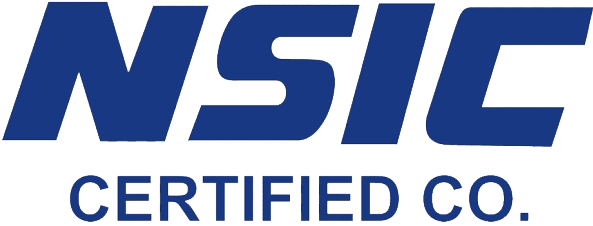Hold on. If you want cash in hand fast, here’s the thing: payout speed is not only about technology — it’s often a direct reflection of a casino’s compliance posture and the regulatory costs it bears. Read the next two paragraphs and you’ll walk away with a practical checklist you can use right now to test any casino’s payout reliability.
Quick benefit: learn three concrete signals that predict whether a casino will pay quickly (and legally), see a compact cost breakdown showing where operators spend to move cash safely, and get a short comparison table that helps you pick a low-risk, fast-payout site. These are hands-on checks — no fluff, no vague marketing lines.

Why compliance costs matter to payout speed
Wow. Compliance isn’t an abstract tax; it’s often the operational reason withdrawals clear quickly or stall for weeks. Casinos that invest properly in AML/KYC automation, licensed banking rails, and third-party audits tend to process withdrawals faster because they can verify and release funds without manual bottlenecks.
Think about it practically: if a site uses manual, email-based KYC and a single offshore payment partner with frequent hold rules, every withdrawal invites a queue and human review. By contrast, a site that spends on integrated identity verification, multi-rail payment processors, and sound liquidity management can clear many routine withdrawals within hours. The difference is budget, systems, and regulatory discipline — not luck.
How regulatory compliance costs break down (practical numbers)
Hold on — let’s do a simple cost split you can use to judge a mid-size operator. Below is a conservative yearly allocation for a typical online casino focused on AU players (USD-equivalent rounded):
- Licensing & regulatory fees (Curacao/MGA/Kahn): $50k–$200k
- KYC/AML tech & identity verifications: $40k–$250k (depends on volume)
- Payment gateway & banking relationships (integration + monthly): $30k–$120k
- Fraud & chargeback reserves / liquidity buffers: $100k–$500k
- Independent audits & RNG testing (periodic): $10k–$60k
- Customer support & manual review staffing (withdrawal teams): $60k–$400k
My gut says many smaller or aggressive-affiliate casinos cut corners on the middle three lines above — which is exactly where withdrawal friction appears. Cutting KYC automation or liquidity buffers can turn a routinely instant payout into a 7–30 day ordeal, especially under a surge of withdrawal requests.
Mini-case: two imaginary operators — fast vs. slow
Hold on. Quick sketch, no fluff.
Operator A (Fast-payout profile): licensed in a transparent jurisdiction, uses multiple payment rails including AUD e-wallets, integrates real-time ID verification and has a dedicated withdrawal desk. They allocate $200–400k/year to compliance and liquidity. Typical verified withdrawals: 0–48 hours.
Operator B (Slow-payout profile): low upfront spend on verification, relies on a single offshore processor, ambiguous licensing details on-site, and a small support team. They allocate <$100k/year on compliance/processing. Typical verified withdrawals: 5–30+ days, with anecdotal reversals.
On the face of it, Operator A’s higher operational cost increases prices for the operator but drastically reduces risk for the player. Operator B looks cheaper on marketing but often costs players time and stress — and occasionally, unrecoverable money.
Comparison: Compliance approach vs. payout speed
| Area | High Compliance Investment | Low Compliance Investment | Impact on Payouts |
|---|---|---|---|
| KYC/ID Verification | Automated, multi-vendor (instant verification) | Manual/email, intermittent checks | Short verification times vs. repeated requests |
| Payment Rails | Multiple certified providers, crypto+e-wallets | Single offshore processor, limited rails | Faster routing vs. failed/held transfers |
| Liquidity Reserves | Dedicated buffers, daily reconciliation | No reserve, relies on incoming cash flow | Immediate payouts vs. delayed or reversed cashouts |
| Audit & Transparency | Public audit reports, ADR named | No visible audits, ambiguous ADR | Trustworthy payout claims vs. unverified promises |
Choosing a fast-payout casino: signals you can check in five minutes
Hold on. Don’t be fooled by glossy branding. Use this quick test.
- License visibility: is a regulator and license number displayed on-site? (If not, treat as high risk.)
- Payment diversity: are AUD-friendly rails and e-wallets listed? Crypto acceptance can speed things but also brings volatility.
- KYC clarity: does the site explain what documents are needed and how long verification takes?
- ADR / dispute resolution: is an independent dispute body named (e.g., eCOGRA, IBAS, independent jurisdiction authority)?
- Player feedback: scan recent withdrawal complaints on reputable community sites (filter for verified dates).
Where a practical recommendation fits (and a neutral resource)
Alright, check this out — when you need a platform that balances a large game library with decent operational practices, it helps to test the withdrawal flow yourself with a small deposit and a low-risk cashout. For platforms that advertise a big catalogue and sports integration while still offering relatively modern payment options, you can start by visiting here to inspect available AUD rails and the KYC process before you commit a larger stake. This is not an endorsement; it’s a practical pointer to a site that illustrates the duality of great UX vs. compliance ambiguity.
Quick Checklist (printable)
- Small deposit test: $10–$30 in AUD, then request a $20 withdrawal.
- Time the verification workflow: note timestamps for document upload → approval → payout.
- Document clarity: does the site list acceptable IDs and prove-of-address limits?
- Payment options test: can you withdraw to at least two rails (e-wallet, crypto, bank)?
- Record support experience: was chat/email helpful and consistent?
Common Mistakes and How to Avoid Them
- Assuming marketing equals reliability — avoid signing up and loading large sums before testing withdrawals.
- Ignoring currency mismatch — always fund in AUD where possible to avoid conversion holds.
- Uploading poor-quality documents — scanned PDFs or CCTV photos slow verifications; use high-quality scans and clearly labelled files.
- Chasing bonuses blindly — high WR (wagering requirements) and D+B rules can trap funds; calculate turnover before claiming.
- Relying solely on chat replies — ask for written confirmation of payout rules and ADR contacts.
Mini-FAQ: practical answers
Frequently asked questions
Will a casino licensed offshore ever pay quickly?
Short answer: yes, some offshore-licensed operators pay quickly if they invest in good payment rails and KYC tech. Longer answer: licensing jurisdiction matters for dispute recourse, but payout speed is operational — funded reserves and automated verification are the real speed drivers.
How much should I expect to wait for a verified withdrawal?
Verified withdrawals on well-run sites typically clear in 0–72 hours depending on method. E-wallets and crypto are usually fastest; bank transfers and cards can take 1–5 business days after processing. If a site routinely reports multi-week cases, treat it as high risk.
Do bonuses slow payouts?
Sometimes. Bonus-tied funds are subject to wagering requirements and restrictions that can prevent or delay withdrawals until conditions are met. If fast cash matters, avoid depositing solely to chase high-WR bonuses — choose smaller, cleaner promos.
Two small original examples (what to try)
Example 1 — The Speed Test: deposit A$20 via e-wallet, request A$15 withdrawal. Time each step and record whether any unsupported documents are requested. If verification completes within 24–48 hours and the e-wallet receives funds that same day, the site scores “fast” for low-volume players.
Example 2 — The Bonus Trap: deposit A$50 with a 35× (D+B) wagering requirement. Calculate required turnover: (D+B)×WR = (50+50)×35 = A$3,500. If average bet size is A$1, that’s 3,500 spins — likely more than a casual player will accept; expect longer retention of funds and potential extended KYC checks during attempted cashouts.
Regulatory nuances for Australian players
Hold on. Australian players should note that domestic laws restrict certain types of offshore gambling promotion and payments; the Australian Communications and Media Authority (ACMA) issues guidance on prohibited interactive gambling services. Financial crime rules are enforced through AUSTRAC obligations on local payment providers, so casinos that accept AUD and use legitimate AU-facing rails must still comply with KYC/AML controls.
If you’re in Australia and a casino refuses to provide a license number or an ADR contact, consider it a red flag. Even if a site is marketed heavily to AU players, lack of clear regulatory transparency reduces your avenues for dispute resolution significantly.
18+ Only. Gamble responsibly — set deposit and session limits, know when to stop. If you’re in Australia and need support, contact Gambling Help Online (https://www.gamblinghelponline.org.au/). Verify legal access in your state before wagering.
Sources
- https://www.acma.gov.au
- https://www.austrac.gov.au
- https://www.ecogra.org
About the Author
Alex Mercer, iGaming expert. Alex has consulted for online operators and payment providers across the APAC region and spends his spare time running small-scale, practical tests of casino payout systems to separate marketing claims from operational reality.










